Input Devices in Computer Graphics
An Input device is the piece of computer hardware equipment used to give input to the computer. The input can be in the form of graphics, text, sound, audio, video, and image, etc. “Input devices are those devices through which we can give the data and instructions to the computer.”
For Example- Mouse, Trackball, Keyboard, Light pen, etc.
Classification of Input Devices
- Manual data entry devices
- Direct data entry devices
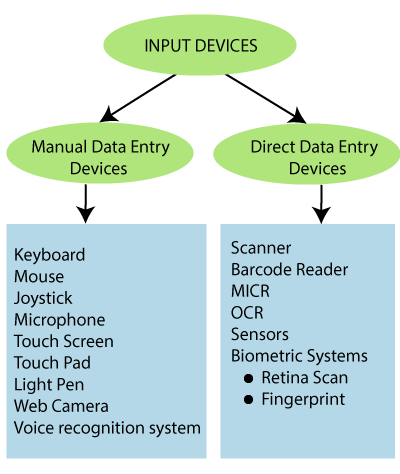
Manual Data Entry Devices
Manual input devices are those peripheral devices through which the user can enter the data manually (by hand) at the time of processing.
It also includes-
Keyboard: It is the commonly used input device. It is designed to input text and characters.
A keyboard contains approx. 108 keys. For Example- Alphanumeric keys, Numeric keys, Function key, and cursor key, etc.
Types of keys: These keys include:
Alphanumeric keys: These are located in the center of the keyboard. These keys consist of alphabet (A-Z), Number (0-9), and symbols (@, #, $, %, ^, &, *, !, =, +).
Numeric Keys: A part of keypad contains 17 numeric keys. In which we can include number up to 0-9, mathematics operator like +, -, /, *, and enter key.
Function keys: These keys are placed at the top of the keyboard. In which we can include F1, F2 up-to F12. The function key performs many tasks according to the software.
Cursor Keys: The cursor keys include Up, Down, Left, and Right. These are used to move the cursor on the screen.
Types of Keyboard: The type of keyboard is:
1. Normal Keyboard: These are the commonly used keyboard. It is used by the user in their PCs. It contains 108 keys. The normal keyboards are connected to the CPU through the wire.
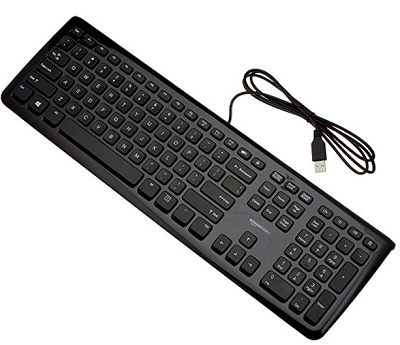
2. Wireless Keyboard: The wireless keyboard connected to the computer without the wire. It works for a limited distance. It is more expensive than a normal keyboard. The user faces technical complexity in it.
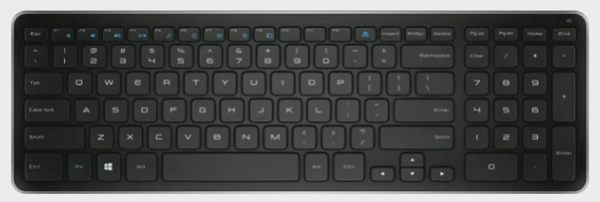
3. Ergonomic Keyboard: It gives the user comfort and ease during the typing; that’s why it is called the “Ergonomic keyboard.” This keyboard is used to increase the efficiency of the user. It also reduces wrist pain during typing.
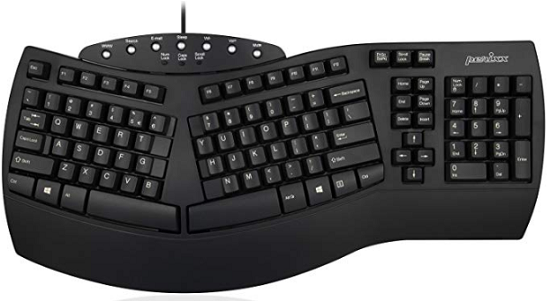
Advantages of Keyboards
- Easy to use
- Enable fast data input
- Well tried technology
Disadvantages of Keyboards
- Sometimes it is difficult to use
- Need desk space to keep
Mouse: It is used as a popular pointing device. It is used to create images, graphics as well as to click on any button or menu. The mouse has two or three buttons.
Functions of the mouse:
- Clicking
- Double Clicking
- Right Clicking
- Dragging
- Scrolling
Types of Mouse
There are three type of mouse are as follow:
- Mechanical Mouse
- Optical Mouse
- Wireless Mouse
1. Mechanical Mouse: This mouse has a rubber ball at the bottom, when we rotate the mouse on the surface than the rubber ball also rotates inside the shell. Now the sensors inside the mouse give a signal to the computer.
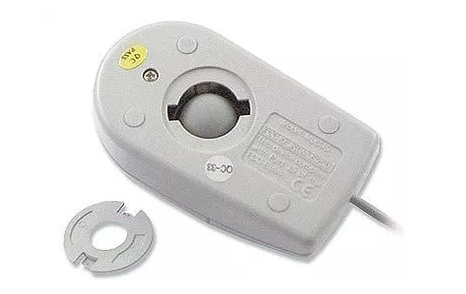
2. Optical Mouse: It is a type of Non-mechanical mouse. A light beam is emitted from the surface below it. Based on the light beam, the mouse determines the distance and speed of the object.
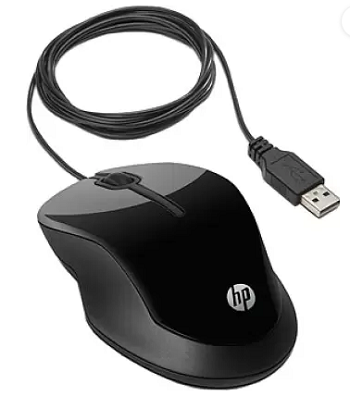
3. Wireless Mouse: This mouse communicates to the computer with the help of radio-frequency.
It has two main components:
Transmitter- It is used to send the information of the mouse’s speed and its click in the form of an electromagnetic signal.
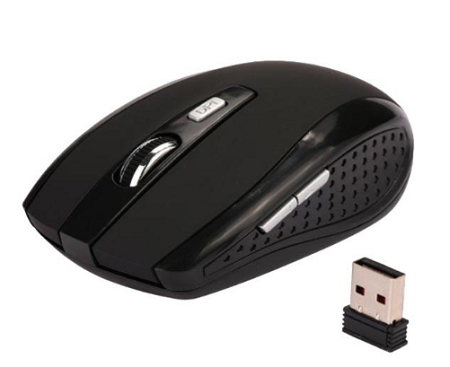
Receiver: It connects to the computer and used to receive the signals sent by the transmitter.
Advantages of Mouse
- Easy to use.
- Less Expensive.
- The Cursor moves faster than the arrow keys of the keyboard.
Disadvantages of Mouse
- Required flat surface to move
- Needs regularly cleaning
- Damaged easily
Joystick: It is a pointing device. It is used to play video games. It has a rounded ball at both ends. The joystick can be moved in all directions.
The Joystick is similar to a mouse. It is also used in computer-aided designing (CAD).
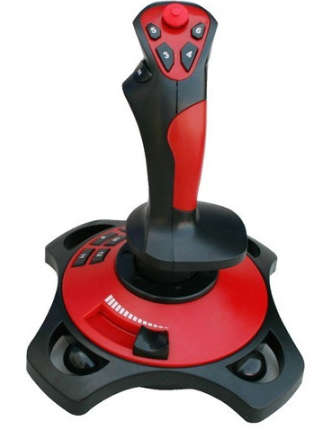
Advantages of Joystick
- Used in playing games
- Fast Interface
- Easy to Navigate
Disadvantages of Joystick
- Sometimes difficult to control
- Required hand Movement
- It is not robust
Microphone: The microphone was introduced by "Emile Berliner" in 1877. It is also called "Mic." The Microphone is used to take input in the form of audio.
The microphone is plugged into the specific port of the sound card in the computer system. Some microphones are wireless.
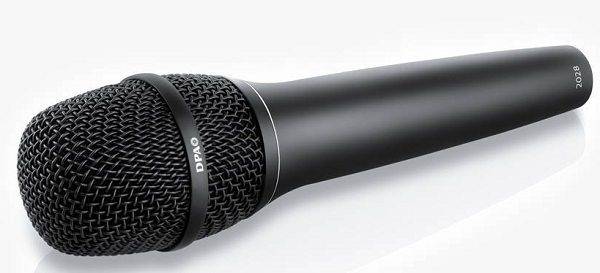
Touch Screen: It is an Electronic Visual Display, which is used to detect the touch of finger and hand in its display area.
It is most widely used with those computer machines that can interact with the user.
For Example: Smartphones, Tablet, Etc.
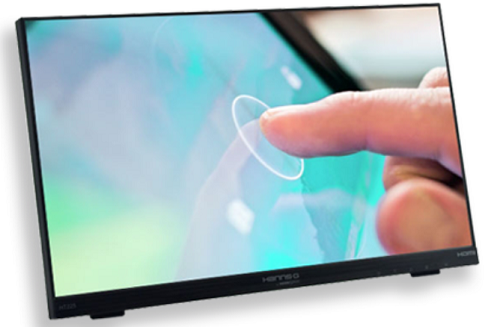
Type of Touch Screen: The types of the touch screen are:
- Resistive: It is made up of hardened acrylic plastic. It is pressure sensitive. It has minimal clarity. It has a durability of 15 million touches.
- Capacitive: It is made up of glass with coating. It activates by human body electricity. It has the best clarity. It has a durability of 60 million touches.
- Surface Acoustic Wave (SAW): It is made up of a Glass with coating. SAW activates by wave absorption. It has medium clarity. It has a durability of 30 million touches.
Advantages of Touch Screen
- Simple User Interface
- Speed
- Durability
- Improve Accessibility
Disadvantages of Touch Screen
- Screen Size
- Sensitivity Issue
- Accidental Dialing
Touch Pad: It is a flat pad used in laptops on which we slide the finger to move the cursor. It is a touch-sensitive area.
It is also called “Trackpad.” It is used to translate the motion and position of the user’s finger. It also includes two buttons:
Left Click: It is used to select the option.
Right Click: It is used to display the options on the screen.
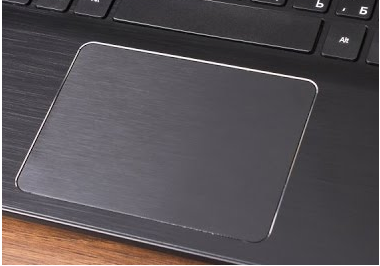
Advantages:
- No Mouse Needed
- No need of a wire-like mouse
Disadvantages:
- Lacks of the scroll wheel
- Less sensitive than a mouse
Light Pen: It is a tool that is light sensitive. It is used to draw pictures and graphics on the computer screen. It is also used to select the objects.
The pictures made by the light pen can be stored in the computer and can be improved as needed.
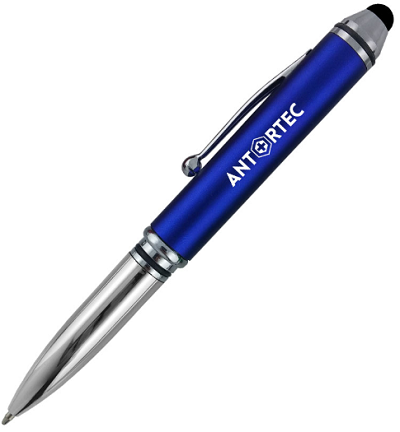
Advantages:
- It allows the user to select any object.
- It does not have any coating.
- Easy to Use
- Available in different colors
Disadvantages:
- Works only with CRT screens
- Not very accurate drawing
- Sensitive with dust
Web Camera: It is a hardware input device. It is a video camera that is used to transmit pictures or videos in real-time to a computer network.
It is connected with laptops, or we can connect it with the computer through USB cable. It is also called a small digital camera.
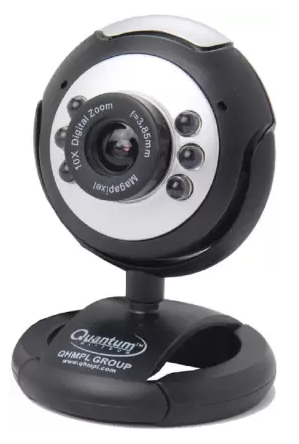
Advantages:
- It can connect with people across the world.
- Easy to use
- It uses both sound and video
Disadvantages:
- Poor Quality Images
- Limited Features
Voice Recognition System: It is also called the “Speech Recognition System.” It is a computer software program that takes human speech as an input, converts that into digital form, and act on it.
Voice
recognition system is used to operate mobile phones through voice
command.
For Example: Google Assistant, SIRI (Apple) Etc.
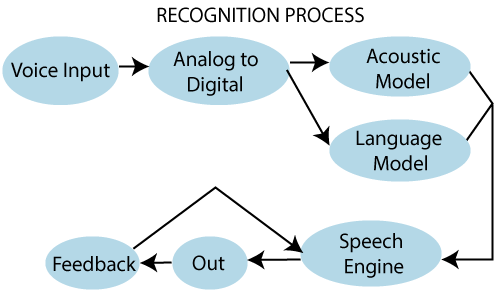
Advantages:
- Improves Efficiency
- Easy to use for anyone
- Easy to Understand
Disadvantages:
- Vocal Problems
- Requires more storage to store voice files
- Noise Interference
Direct Data Entry Devices
Direct data devices are those peripheral devices through which we can directly input the data from the source and transfer that to the computer system.
It also includes:
- Scanner: It is an input device. It is used to scan documents such as photographs. It is used to input any shape or written data on a page directly into the computer.
Its main advantage is that the user does not have to type the information.
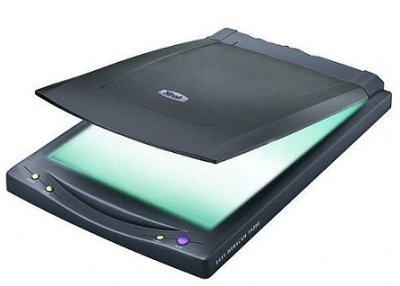
Advantages:
- High-Resolution Images
- Easy to handle
- Fast image analysis
- Image portability
Disadvantages:
- High Cost
- The Need for internet and power supply
- Difficult to manage large digital files
Barcode Reader: It is also known as "Price Scanner" or "Point-of-sale scanner." A barcode is a particular type of code. It contains a series of thick and thin lines, which are called "Bars." The bar contains the information.
We can read the barcode through an optical scanner called "Barcode Reader." The user can connect the barcode reader with the computer through a serial cable.
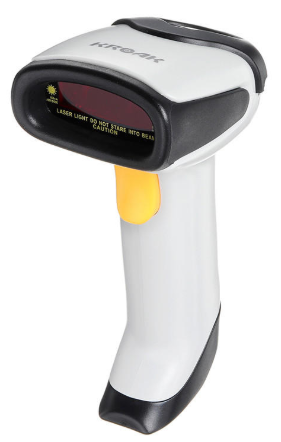
Advantages:
- Fast Speed
- Accuracy
- Portable
Disadvantages:
- Require a clear line of sight
- Expensive
MICR: It is also called “Magnetic Ink Character reader.” It is widely used in the processing of cheques in the bank. MICR is used for reading magnetic ink printed characters.
This machine is fast and automatic. There should be a nil chance of making mistakes.
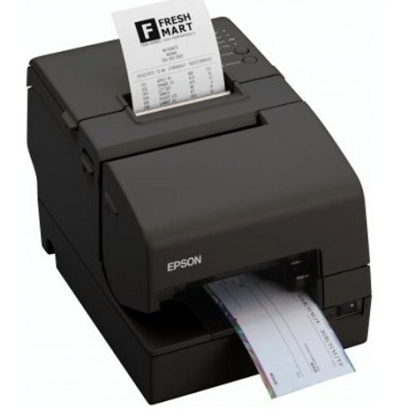
Advantages:
- More secure than OCR
- More accurate than OCR
- Allow overwrite cheques
Disadvantages:
- Only a limited character set
- Expensive
OCR: It is also called "Optical Character Recognition." It is a technique which is used to read a special type of symbols, letters, or the numbers. The light source can read the characters.
The OCR can read characters printed from typewriters, the character of the cash register, and the character of the credit card. The OCR fonts are stored on the computer.
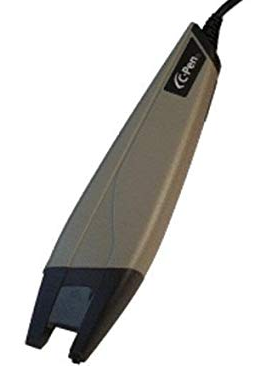
Advantages:
- Faster data entry
- Printed document converted into text files
Disadvantages:
- Cannot recognize all type of text
- Poor or Old documents cannot be recognized
Sensors: A Sensor can be treated as an input device that is used to detect and change the force, pressure, any other physical quantity, and sends the data to the computer.
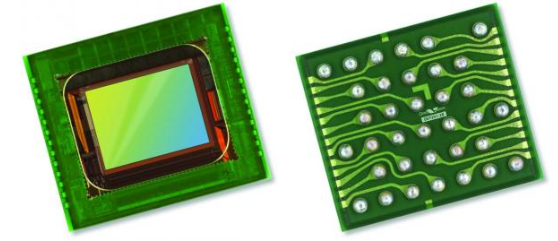
Advantages of Sensors
- Sensitivity
- Reliability
- High-Resolution
Disadvantages of Sensors
- Affected by temperature and humidity
- Difficulties in designing
Biometric System: A biometric system is defined as an input system that is used to identify a person. A biometric machine can identify a person by face, eyes, voice, finger, or thumb impression.
It is a secure system; it means no biometric data can be stolen.
Uses of Biometric System:
- Biometric Door Lock
- Biometric Attendance system
- Biometric ATM
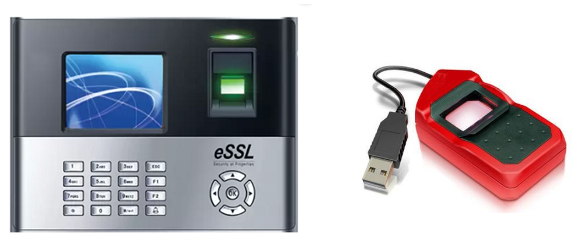
A biometric system also includes:
- Finger Scanner: It is used to identify the person by his thumb or finger.
- Hand Scanner: It is used to identify the person by his palm impression.
Advantages of Biometrics
- More secure than passwords
- Accuracy
- Uniqueness
Disadvantages of Biometrics
- Costly
- Missing or injured body part problem
Related Posts:
- Output Devices in Computer Graphics
- Display Devices in Computer Graphics
- Scan Conversion of an Ellipse Computer Graphics
- Filled Area Primitives Computer Graphics
- DDA line Drawing Algorithm in Computer Graphics
- Line Clipping in Computer Graphics
- Computer Graphics Window
- Projection in Computer Graphics
- Animation in Computer Graphics
- Applications of Computer Graphics